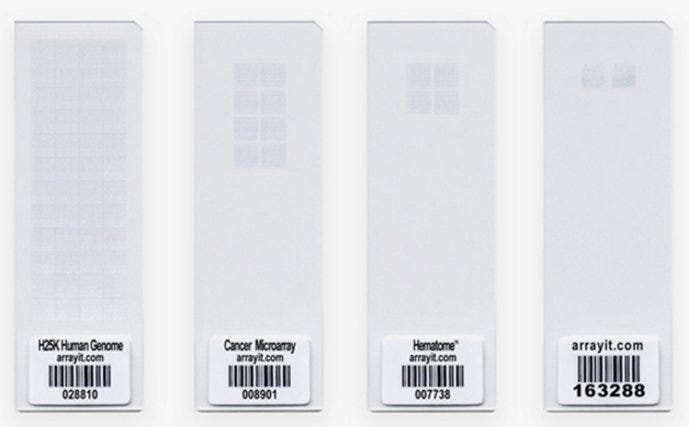
- +1 (714) 578-6100
Hours Mon - Fri, 07:00 AM - 06:00 PM (Pacific Time)
Since its advent in 1995, miniaturized microarray analysis has become a mainstay analytical technique of genomic, proteomic, pharmaceutical and clinical laboratories worldwide. The initial microarray chips, developed by Pat Brown at Stanford University, utilized oligonucleic acid probes deposited on a substrate to discover the genomic composition of cells. After this initial focus, the technology rapidly expanded to utilize other, related probes (such as DNA, RNA, peptides, carbohydrates).
In addition to expanding the types of molecular probes, the technology also increased the types of substrates to which probes can be attached. Glass slides, plastic/silica chips, and silica or polystyrene beads can now be used as the medium for constructing a microarray.

Prominently featured in the pharmaceutical manufacturing industry, a barrier isolator creates an aseptic environment for compounding parenteral (injectable), ophthalmic, and inhaled medications. Due to the significant risk posed by microbiological contamination, the critical area where the compounding takes place requires protection beyond that of a typical laboratory glovebox.
Since the first publication of USP’s General Chapter <797> Pharmaceutical Compounding—Sterile Preparations, compounding aseptic isolators (CAI) have offered the most economical alternative to constructing a dedicated cleanroom for sterile compounding. However, pharmaceutical compounding standards have undergone a major overhaul in recent years, including a developing revision of USP 797.
Below are the answers to three common questions regarding the future of isolators in compounding pharmacies.
The preparation of samples for protein and nucleic acid analysis requires two essential steps: disruption of the tissue to release individual cells and lysis of those cells to release their cellular contents. Mechanical homogenization and sonication (sometimes referred to as ultrasonic homogenization) are two mainstay techniques for these processes.
Selecting the proper technique for your particular application deserves careful thought. Each one has its benefits and drawbacks, and laboratories often choose to use these techniques in concert with one another. Keep reading for information to help select a method that avoids damaging precious or irreplaceable tissue samples.
Mechanical Homogenization
Mechanical homogenization utilizes direct physical force to bring a biological sample in solution to a state of uniform distribution, such that all fractions’ molecular composition is consistent. Traditionally, mechanical disruption was achieved by
High-tech industries have long been plagued by an unseen foe. From semiconductors to medical devices, manufacturers are forced to accept high product rejection rates due to particle contamination or critical defects. Oftentimes, contamination issues and product damage in these industries can be traced back to uncontrolled static electricity. When static is allowed to build-up, it becomes a double threat to a cleanroom, increasing the chances of ESA-induced contamination and electrostatic discharge (ESD) damage.
ESA Contamination in Cleanrooms
Electrostatic attraction (ESA) is the phenomenon that causes dust to stick to the glass screen of an old vacuum tube television. When particles become statically charged by friction or contact with another material, they adhere to surfaces that have the opposite charge. While this may seem harmless in the example of the TV monitor, the semiconductor industry works on a microscopic
Whether you’re using a laboratory hood to limit exposure to chemical fumes or you require a particle-free work environment, all components of your hood work in tandem to attain optimal functionality. Hoods are enclosures, sometimes called work benches, work stations, or cabinets, that either blow filtered air down onto the work surface (positive pressure) or exhaust filtered air to the outside (negative pressure), based on the nature of the application. Below is a guide to understanding the different components of your cleanroom hood.
